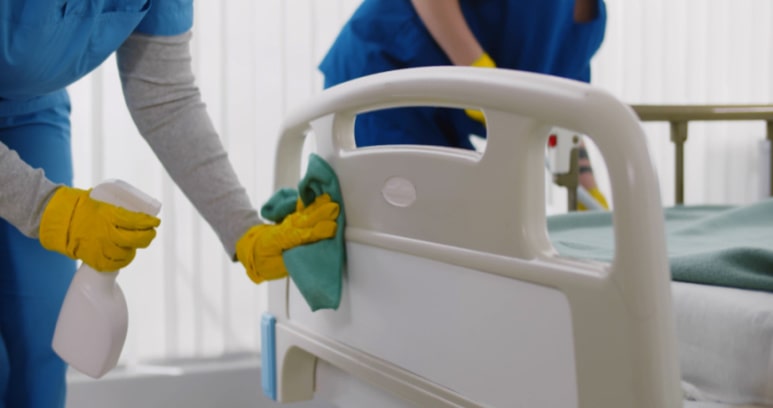Importance of environmental monitoring
While hand hygiene and manual cleaning remain the ‘gold standards’ in maintaining hospital hygiene these traditional methods are not always sufficient to address the transmission of infection. Hospitals present a complex environment for infection control due to the various types of surfaces and equipment to the cleaned and sanitised. The added pressure to quickly turnaround rooms for new patients makes the clinical setting susceptible to inadequate cleaning and therefore increasing the likelihood of transmission between patients.
Infection control programs (ICPs) are crucial for the effective management of patient care and reducing the incidence of HCAIs. It’s widely accepted that ICPs help reduce rates of hospital-acquired infections (HAIs) by evaluating the local burden and through the early detection of possible outbreaks. ICPs require several personnel, all with different roles and responsibilities. A fundamental role of every ICP is environmental monitoring.
What is environmental monitoring?
Environmental monitoring is an important activity carried out to verify sources of contamination within a hospital. The purpose of environmental monitoring can be two-fold; to monitor hygiene standards and also to investigate for the presence of pathogens which may be the cause of an outbreak (1) Environmental monitoring involves the swabbing of high contact points such as door handles, bed frames, sinks and taps etc. Overall, environmental monitoring provides the assurance that patients are being cared for in a safe, sanitary environment.
Why is environmental monitoring important?
Patients in healthcare facilities are often particularly vulnerable to infections due to weakened immune systems. Increased levels of antibiotic resistant pathogens such vancomycin-resistant enterococci (VRE), meticillin-resistant Staphylococcus aureus (MRSA) and of carbapenemase-producing Enterobacteriaceae (CPE) pose an additional risk of increased morbidity and mortality. Studies have shown that patients admitted to a room previously occupied by a colonised patient are up to 70% more likely to acquire a HAI during their stay (1). Not only are HAIs a significant cause of morbidity and mortality, they’re also a financial burden for healthcare facilities. Environmental sampling can identify hot spots and provide an early warning system so the appropriate corrective actions can be taken before an outbreak occurs.

The ideal device for surface sampling?
Copan provides an accurate and efficient product for microbial sampling, cleaning validation and environmental monitoring through their Swab Rinse Kit (SRK) range. The SRK™ range meets all the requirements of ISO 18593:2018.
Benefits Include:
- Pre-moistened swab with saline solution – improving sample uptake.
- SRK™ swabs allow uneven, irregular surfaces or equipment to be easily sampled.
- Convenient transportable tubes with attachable lids.
- Samples can be refrigerated in tubes up to 24 hours before laboratory analysis.
- Templates provided with SRK™ kits enable users to standardize cleaning validation and environmental monitoring processes
The SRK™ swab system delivers a cost-effective and convenient pre-analytical solution for enhancing environmental monitoring programs and improving laboratory workflow efficiency.
Healthcare workers deliver lifesaving and life-sustaining care to patients every day. Life-threatening nosocomial infections can undermine these efforts. Adopting simple and straightforward measures to identify and eradicate potential sources of infection provides a safer environment for patients and gives healthcare workers confidence that the facilities they work in are not a threat to patients.
If you would like more information on the SRK™ range, get in touch with a sales specialist below!
Get In Touch
References
Galvin, S., Dolan, A., Cahill, O., Daniels, S. and Humphreys, H., 2012. Microbial monitoring of the hospital environment: why and how?. Journal of Hospital Infection, 82(3), pp.143-151.
Global Alliance for Infections in Surgery. 2022. 7 strategies to prevent healthcare-associated infections. [online] Available at: <https://infectionsinsurgery.org/7-strategies-to-prevent-healthcare-associated-infections/> [Accessed 29 July 2022].
Q Laboratories. 2022. Environmental Monitoring Can Reduce Healthcare-Associated Infections (HAI) – Q Laboratories. [online] Available at: <https://www.qlaboratories.com/environmental-monitoring-for-hais/> [Accessed 29 July 2022].
Weber, D., Rutala, W., Miller, M., Huslage, K. and Sickbert-Bennett, E., 2010. Role of hospital surfaces in the transmission of emerging health care-associated pathogens: Norovirus, Clostridium difficile, and Acinetobacter species. American Journal of Infection Control, 38(5), pp.S25-S33.


